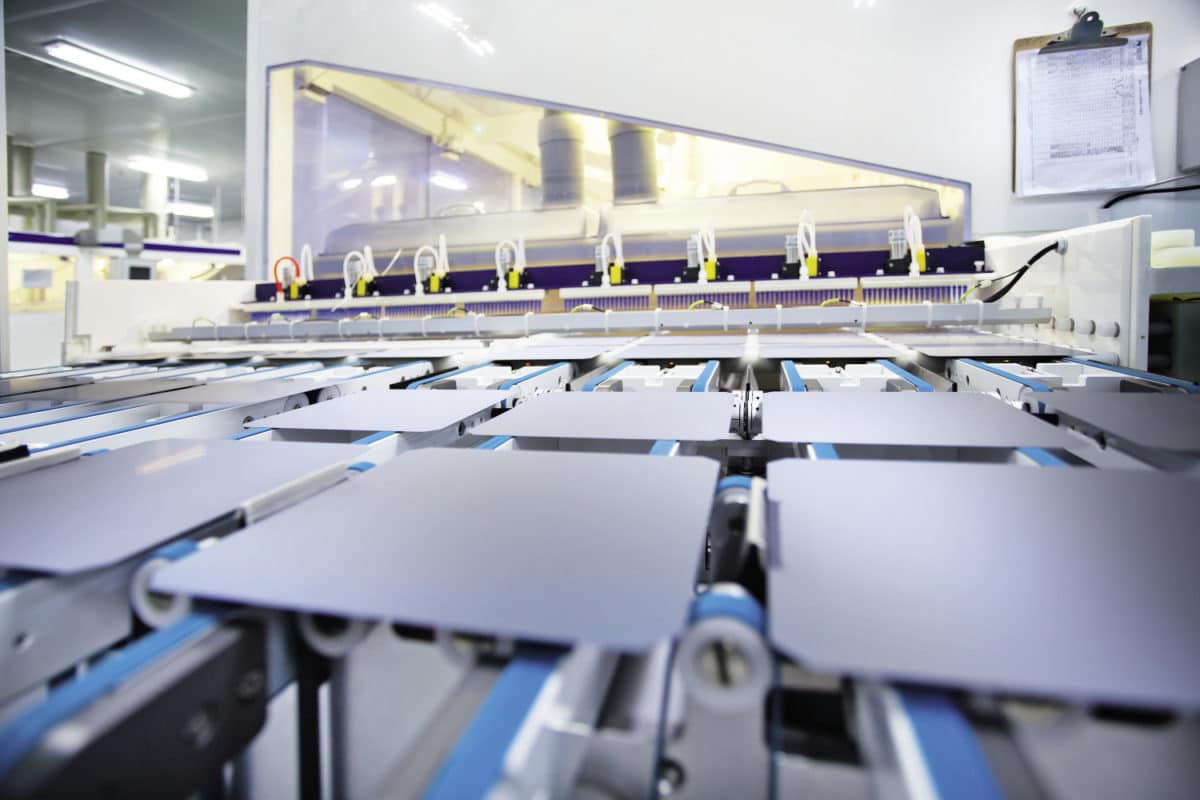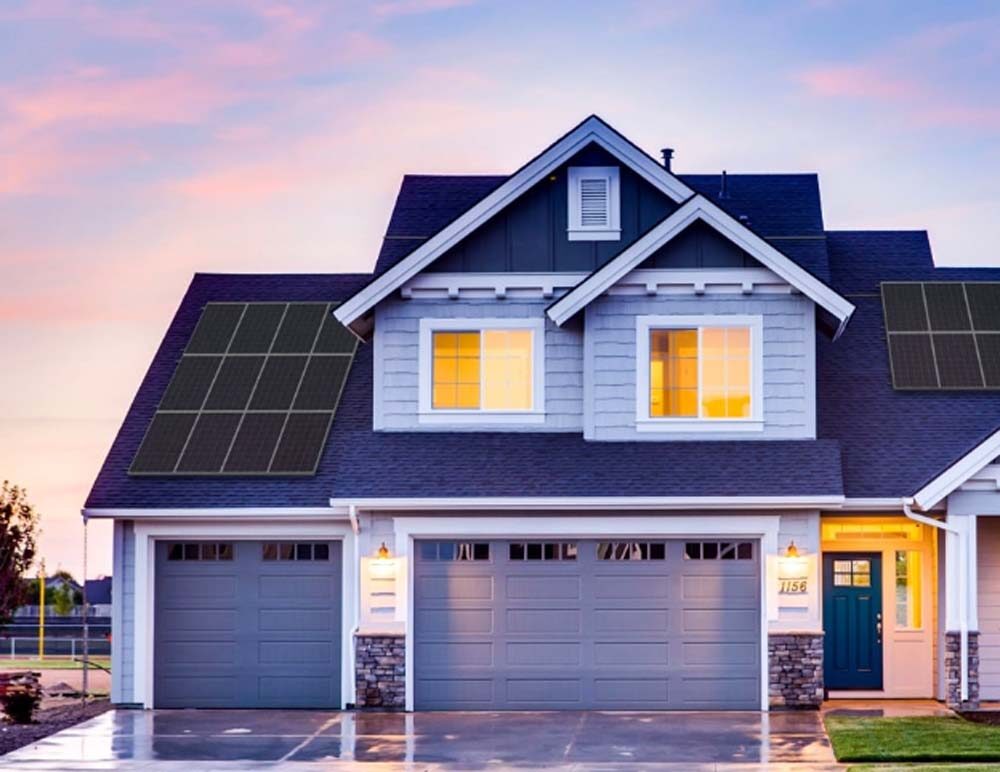From the January print edition of pv magazine
It’s been a dramatic year for the Chinese PV industry. In 2019 there was an unexpected drop in installations and a decisive shift from multicrystalline to mono. The country also ended its FIT policy and replaced it with auctions.
But there’s been another change over the past last year — an increase in wafer sizes and the rise of M6. The M6 size is a wafer with a length of 166 mm and a maximum diagonal length of 223 mm — with cut corners. The previous most popular size, M2, had a length of 156.75 mm and a diagonal length of 210 mm.
By comparison, M6 represents a wafer-area increase of 12.2%. In a traditional, utility-scale module featuring 72 cells, M6 can increase power output from 395 W to 430 W.
Big is beautiful
Just as in the semiconductor industry, wafer size matters in PV.
The wafer is the power-generating component in a PV module, and accounts for around 40% of total module costs. When the wafer area increases, the power output of each wafer increases, too. However, the cost on the production side might remain the same, or grow by just a small amount.
The larger, more powerful wafer also allows for cost reductions on the PV array side. Through the utilization of a bigger wafer, balance-of-system costs can be decreased per watt-peak installed, including base pilings, support racks, or trackers, along with all of the electrical components, such as inverters, junction boxes and cables. The result is a lower levelized cost of electricity and higher return on investment for PV projects.
Looking back at the development of the PV industry over the last 40 years, the increase in wafer sizes is a long-running trend. Forty years ago, mainstream wafers were only about 100 mm in length, increasing to 125 mm by the 2000s. In 2012, the M0 type, with an edge length of 156 mm, was promoted and eventually became the dominant size. Wafer sizes have increased in small incremental ways over the last seven years — from M1 (156.75/205 mm diagonal length) to M2 (156.75/210 mm), and to M4 (161.7/211 mm).
But now, it appears, a new milestone moment has arrived.
Why M6
It is difficult to precisely verify which company deployed the first M6 wafer. But Longi, the Chinese monocrystalline giant, is the leading advocate and promoter of the size. With the recent launches of its latest Hi-Mo4 and Hi-MoX modules in Shanghai and Sydney, Longi has attempted to promote this 166 mm size in the PV industry, while unifying specifications into a single standard – the M6.
Why did Longi choose to back the M6, rather than another size? It appears that the choice was both long-considered and strategic. Longi reports that it believes that M6 (166 mm) offers the best balance between cost reductions and system compatibility. Based on Longi’s calculations, the price of the M6 wafer is higher than the M2 by $0.048 per piece in 2019, but this will drop to less than $0.029 in 2020. With this extra cost, the M6 can provide 6-7% of average BOS savings compared to the M2, delivering savings of around $0.012/W.
Meanwhile, one very important reason Longi is promoting the M6 is system compatibility. This includes two points: ease of installation and power electronics. For installation, a 72-M6-cell module weighs around 30 kg, which is near the limits of manual installation. Considering the increased power output, including potential bifacial gains, the M6 wafer will increase the operational current to around 13 amps, which is the limitation of current string inverters. Modules using M6 wafers are compatible with centralized inverters, too.
In cell production, Longi claims the M6 is compatible with most recently installed major equipment, including diffusion, annealing, PECVD, and other processes. Even the modification costs of tooling is limited because of the natural redundancy of older equipment.
“We believe in M6 and are going to promote this specification just because the modification of most related equipment is acceptable, both technically and economically,” said Xie Tian, vice president of Longi’s silicon wafer business unit. “We have studied thousands of [pieces of] equipment, both upstream and downstream, discussed with many of our customers, partners and vendors for the general compatibility of this new size, and we found M6 is the best choice. Other than those operating very old types of equipment, most current equipment can be upgraded to accommodate M6 with little cost. The entire industry will get a best-cost reduction with least investment for equipment modification and retrofit.”
Industry feedback
Both upstream and downstream players have confirmed the compatibility of M6. Wang Yuming, general manager of Jinchen Machinery – one of the largest PV manufacturing equipment providers in China – said at a recent industry conference that although the size of M6 almost reaches the limitations of some manufacturing equipment, the company’s solutions could be modified to switch to it at relatively little cost. However, customized equipment would have to be supplied for the production of larger wafers, and the cost might be higher than the potential benefit from the bigger sizes, according to Jinchen’s calculations.
Aiko Solar, a major solar cell maker with more than 9 GW cell capacity, said in an interview that it could adjust its production lines to M6 production with little additional investment. As it happens, Aiko Solar has done just this and has completed the modification of its 3.8 GW Tianjin factory to fulfill orders from customers for M6 cells. In addition, the company believes that shipments of M6 will account for more than 60% of its production in 2020, rising to 90% in 2021.
Several key module makers have started to use cells of the M6 wafers to boost power output. China’s largest racking and tracker company, Arctech Solar, has studied the potential impacts of M6 modules on mounting structures and believes its current designs can support the additional weight. The world’s largest tracker manufacturer, U.S.-based NEXTracker, has also expressed support for M6.
What about M12?
But Longi is not alone, as another contender has stepped up to take a lead in terms of wafer sizes. Zhonghuan Semiconductor, another wafer giant, unveiled its latest wafer product – the new M12 size – in August 2019. It features a much bigger size of 210 mm in length and 295 mm on the diagonal. Zhonghuan said a 60-cell PV module with this impressively enlarged wafer would easily boast module power output of more than 600 Wp.
However, the wider PV industry is still extremely cautious about the so-called M12 wafer from Zhonghuan. In contrast to the response to the M6, many equipment suppliers have refused to say a word about the possibility and the cost of modifications to their equipment to adapt to the M12 size. Aside from Zhonghuan, currently no other cell maker has announced production line adjustments to accommodate the M12. Even rack and tracker suppliers have expressed concern about the static and dynamic stability when installed with M12 panels, which would be much heavier than any other module previously installed at scale.
Some industrial experts believe that Zhonghuan’s M12 is targeting next-generation PV cell technologies such as interdigitated back contact (IBC) technology, in order to achieve higher conversion rates plus higher power. In short, M12 appears to be a future size for future PV technologies.
How fast?
The shift of wafer sizes from the currently dominant M2 to M6 may occur faster than many imagine. Longi has revealed that 3 GW of M6 panels were ordered and delivered before the end of 2019. Next year, Longi’s total capacity of 23 GW of solar cells and 20 GW of modules will all be manufactured with M6 wafers, meaning that at least half of its output will be M6.
Other companies are more aggressive about their predictions. One senior marketing executive from a top module manufacturer told pv magazine that he believes the market penetration of the M6 will exceed 50% in 2020 and 70% by the end of 2021, because others will have to follow to protect their market share.
This content is protected by copyright and may not be reused. If you want to cooperate with us and would like to reuse some of our content, please contact: editors@pv-magazine.com.








By submitting this form you agree to pv magazine using your data for the purposes of publishing your comment.
Your personal data will only be disclosed or otherwise transmitted to third parties for the purposes of spam filtering or if this is necessary for technical maintenance of the website. Any other transfer to third parties will not take place unless this is justified on the basis of applicable data protection regulations or if pv magazine is legally obliged to do so.
You may revoke this consent at any time with effect for the future, in which case your personal data will be deleted immediately. Otherwise, your data will be deleted if pv magazine has processed your request or the purpose of data storage is fulfilled.
Further information on data privacy can be found in our Data Protection Policy.